Illustrious history began with victory over France
The first official international football match involving Italy took place on this day in 1910 in Milan.
The Italy team of 1910 wore white shirts. The players
were allowed to chose either white shorts or black
Officially formed four months earlier, the Azzurri made their debut at the Arena Civica in Milan, beating France 6-2 in front of a crowd said to number 4,000 spectators. The match was refereed by Henry Goodley, an Englishman.
The team’s first goal was scored after 13 minutes by Pietro Lana, a forward with the AC Milan club, who went on to score a hat-trick, including a penalty kick. The team played in white shirts, adopting the famous blue colours the following year.
In a team dominated by Milan-based players, the other goals were scored by Internazionale’s Virgilio Fossati, Giuseppe Rizzi of the Ausonia-Milano club and Enrico Debernardi, who played for Torino. Fossati, tragically, was killed six years later while fighting for the Italian Army in World War One.
Organised football had begun in Italy in 1898 with the founding of the Federazione Italiana Giuoco Calcio - the Italian Football Federation - who arranged the first national championship, won by Genoa.
The FIGC was primarily concerned with domestic football and it was the newspaper La Stampa, a daily journal published in Turin, who first mooted the idea of a team to represent the nation.
_-_n._3901_-_Milano_-_Arena_(alternative_take).jpg) |
| The Arena Civica in Milan as it would have looked in the early part of the 20th century |
The FIGC duly announced in January, 1910, that it was to select a national team to make its debut in Milan during the federation’s annual national congress in May of that year.
A commission to select the team was appointed but by mid-April the identity of Italy’s first international opponents had not been decided, while a domestic dispute was about to wreck the selection process.
This involved Pro Vercelli, the Piedmont-based club who were one of the most successful in the early years of the Italian championship, and Internazionale, the team we now recognise as Inter-Milan.
The two had finished the 1909-10 Prima Categoria - forerunner of Serie A - level on points. According to the FIGC rules, Pro Vercelli - champions for the last two seasons - should have won the title by virtue of their superior goal difference.
Yet the FIGC decided to ignore that rule and ordered the teams instead to meet in a play-off on April 24 to decide the title.
Pro Vercelli quite reasonably objected, pointing out too that several of their players would not be available because they were committed to appear in a military tournament on the same day. Yet their pleas were rejected.
 |
| The Italian national team won the first of its four World Cups on home soil in 1934 |
Despite this, the match went ahead as planned on May 15 with France the chosen opponents from a shortlist of three alongside Switzerland and Hungary.
The FIGC were understandably keen that the event, the showpiece of their annual congress, should end in victory and chose France largely on the basis of their poor form. They had been hammered 10-1 by England in April, having previously lost 4-0 to neighbours Belgium.
Furthermore, their travel to Milan involved a 16-hour overnight train journey, disembarking at the city’s railway station at 5am on the day of the match. Not surprisingly, their weary players proved no match for the Italy team, even in the absence of the Pro Vercelli contingent.
For all its significance, the game attracted scant newspaper coverage, with only a brief report in the Milan daily, Corriere della Sera. A 6-1 defeat in the team’s next fixture, against Hungary in Budapest, hardly helped their early efforts to excite the nation.
Nonetheless, it was only 24 years before Italy would be world champions, winning the first of their two World Cups under manager Vittorio Pozzo.
The Azzurri have gone on to become established as one of the superpowers of international football, winning the World Cup four times in total. Only Brazil have been more successful, with five wins.
Travel tip: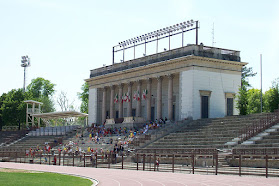
The main grandstand at the Arena Civica is a
striking example of neoclassical architecture
The Arena Civica - now known as the Arena Gianni Brera in memory of one of Italy’s most popular football journalists - can be found in the Parco Sempione behind the Castello Sforzesco in central Milan. It is one of the city's main examples of neoclassical architecture, an elliptical amphitheatre commissioned by Napoleon Bonaparte soon after he became King of Italy in 1805. At one time the home of the Milan football club Internazionale, it is nowadays home to Brera Calcio FC, a lower league football team, as well as a venue for international athletics and rugby union and a host of non-sports activities, including jazz festivals and pop concerts. It can accommodate up to 30,000 spectators.
Travel tip:
The beautifully preserved
Basilica of Sant'Andrea
Vercelli, once home of one of Italy’s strongest football teams, is now best known as the centre of Italy’s rice production industry, with many of the surrounding fields in the vast Po plain submerged under water during the summer months. Rice has been cultivated in the area since the 15th century. The city, which has around 46,500 inhabitants, is in Piedmont, some 85km (53 miles) west of Milan and about 75km (46 miles) northeast of Turin. It is reckoned to be built on the site of one of the oldest settlements in Italy, dating back to 600BC, and was home to the world's first publicly-funded university, which was opened in 1228 but folded in 1372. Vercelli’s Basilica of Sant'Andrea is regarded as one of the most beautiful and best-preserved Romanesque buildings in Italy.
Also on this day:
1567: The baptism of composer and musician Claudio Monteverdi
1902: The birth of musician and band leader Pippo Barzizza
1936: The birth of actress and singer Anna Maria Alberghetti
1943: The birth of opera singer Salvatore Fisichella
.jpg)


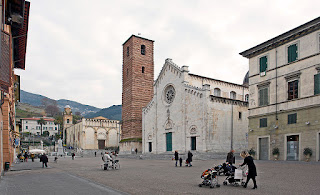

.jpg)


.jpg)
_Tib%C3%A8re_-_Mus%C3%A9e_Saint-Raymond_Ra_342_b.jpg)
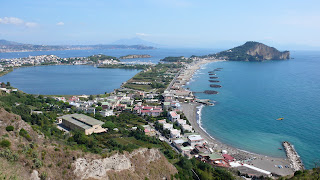









.jpg)


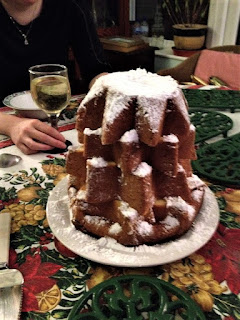
.jpg)


.jpg)

.PNG)


.jpg)
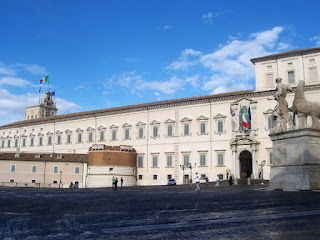
_-_2021-08-29_-_1%20(2).jpg)